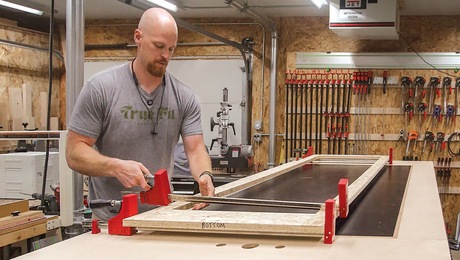Heating Degree Days – Bin Data?

I am looking for the amount of heating degrees days for each temperature band; 50 to 60, 40 to 50, etc. I am not sure, but I think that this is called bin data.
I want this for Kansas City, MO.
I am replacing 2 FHA NG furnaces and one AC unit with a single furance and AC supply both floors.
I am trying to figure out if I want to go with a dual fuel heatpump setup rather than straight AC.
William the Geezer, the sequel to Billy the Kid – Shoe















Replies
http://www.ncdc.noaa.gov/oa/documentlibrary/hcs/hcs.html
you already knew that link though, huh?
FWIW, GSHP would be my choice as a DIY for own home.
If paying for install for a rental, 80% NG.
I think that I had stumbled on it years past, but forgot about it.Part of me wants to go with an 80%. But the way that house is built I think that there is a big advantage for me to go with a sealed combustion system. And the credits and rebates really change things upside down.One proposal I got had price for a basic 80% furnace, 13 SEER AC and it was $1000 more than an 97%, VS blower, multistage furance, and 2 stage SEER 16 AC after the federal tax credits, manufacture rebates, and utility company rebates.Unfortunately I found out that I don't qualify for the $650-$850 electric rebate. The existing unit is 30 YO, SEER 10 and leaks freon like a sleeve. But after servicing it tested at about a 9 and the POCO only pays if you are replacing a working 8 or less.Energy wise I use about $200 a year for AC and going with a 13 seer will drop that to about $140. Without rebates and there is no way that I could justify the extra cost to go to seer 16. It would only save an extra $20 a year and even at tripple electric rates that would only be $600 over 10 years.I use about $700 a year in gas for heating and that is for a 70%(???) furance so that there is something to work with there in saving money. But not a lot.Also based on based on my experience heating the space and the fact that I am going from a two furances to on think that staged heating would be an advantage, but not absolutely needed.So a combination of single stage 90, with VS drive, and a 13 seer AC/heat pump to provide the first stage would give great performance and save money on both install and energy usage. But that is without the rebates/credits. Would still qualify for the gas co $225.And the one dealer that I have been working with does not have a 90/with VS. The lowest is 95%. So that throws the furance into the federal tax credit range. And I think that they are at least 2 stage or variable staging. So that eliminates the comfort advantage to using a heat pump for low level first stage heating.Need to figure to see if the energy saving are worth it with a heat pump.Could not find the bin data that I was looking for.But I did find "Annual Degree Days to Selected Bases 1971 – 2000
NATIONAL"They show 5249 HDD days for a base of 65 and lowest temp that show is for a base of 40. That gives 1214 HDD.While I would like data for 30 or 35, if I understand this correctly only 23% of the total annual heating energy is needed when the OAT is below 40. Thus 77% could come from a heat pump,.
William the Geezer, the sequel to Billy the Kid - Shoe
After thinking about it I realize that the 40* base HDD days does not give me any usual information. That number would relate the amount of energy needed to keep a pump house, for example, from freezing.But it does not give me a clue about the much I need to heat the space to 65 when it is below 40*F. I also need to know how many hours that the temp is below 40..
William the Geezer, the sequel to Billy the Kid - Shoe
NOAA might be good. Also ... call the airport ... they may send you an excell file w/ it. Massage it, reaarrange it to your liking and voila ... your data. If they give you hourly, you can still convert it to BIN data. Also there is an old pub by the .... DOD, maybe Army Corps of Engineers that has all this in it. That used to be our old bible for BIN data.
BTW - BIN data usually is in 5 degree 'bins' e.g. 40-44, 45-49, etc. AND are also divided into 3 day periods ... hours 1-8, 9-16, and 17-24. Very usefull for more accurate calcs or calcs that take into account occupied hours/varying setpoints, etc.
I'm a believer in BIN data for sure.